Abstract
The paper describes a trial conducted in Tanzania of the effect on bancroftian microfilaraemia of common salt medicated with diethylcarbamazine at a 0.1% (w/w) concentration, when given to a closed population of 600-700 with a known salt intake.
After good observer agreement in microfilarial counting had been demonstrated, quantitative blood surveys were performed monthly on known carriers. Paired pretreatment microfilarial counts from the same patients at an interval of 4 months suggested a natural fluctuation in microfilarial densities and emphasized the need for parallel concurrent controls during treatment.
During the trial the mean microfilarial densities fell steadily, being reduced by 73% at 3 months and 90% after 6 months. Tolerance to the drug—salt mixture was extremely good.
Problems of planning, salt preparation and assessment of results are discussed and the importance of correct experimental design in future trials is stressed. The authors suggest that a trial of salt containing 0.2% (w/w) diethylcarbamazine may achieve optimum results. They point out that, while the use of diethylcarbamazine-medicated salt may prove useful in reducing transmission in closed communities or in endemic areas with no alternative source of salt, its extension to national populations as a sole means of bancroftian filariasis control would be of problematical value.
Full text
PDF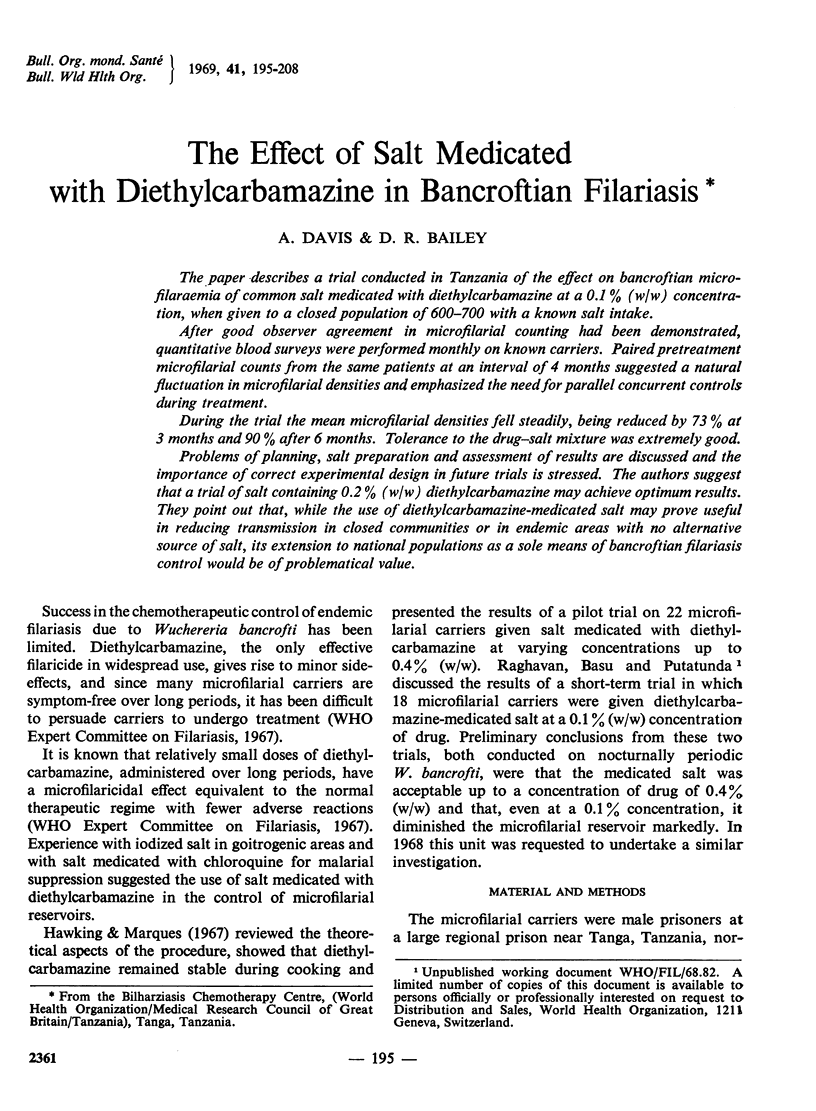
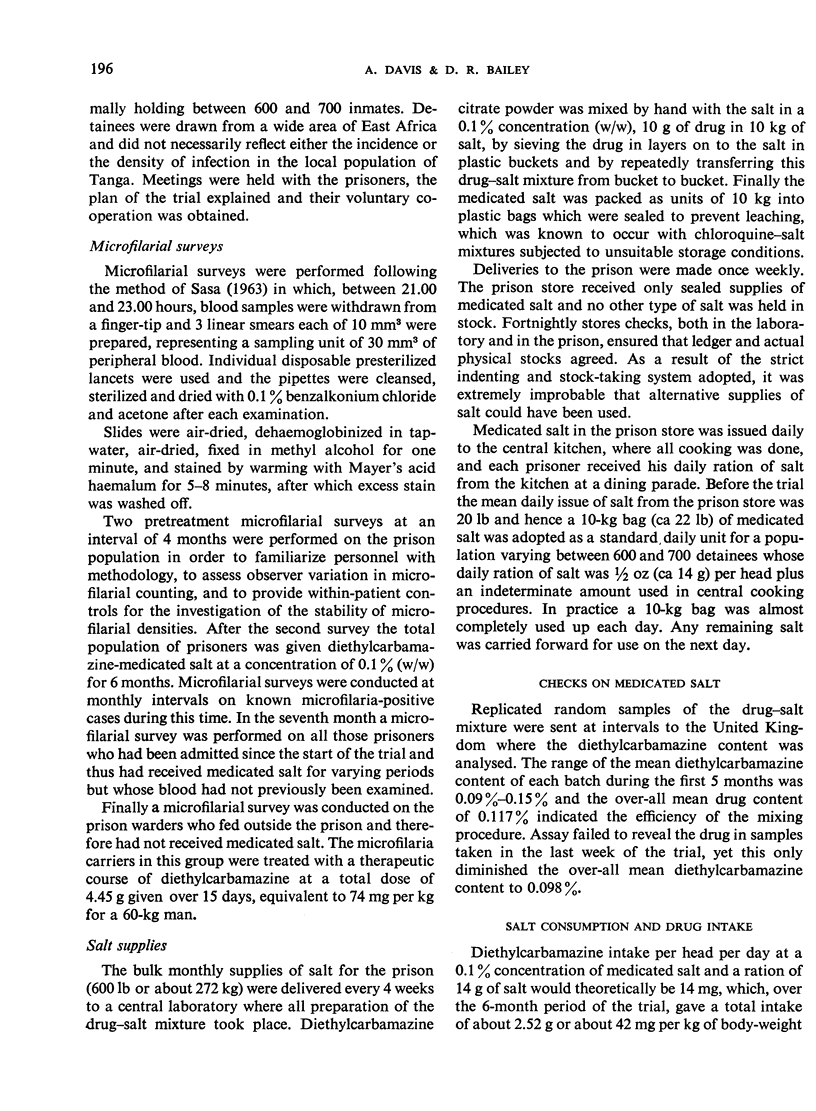
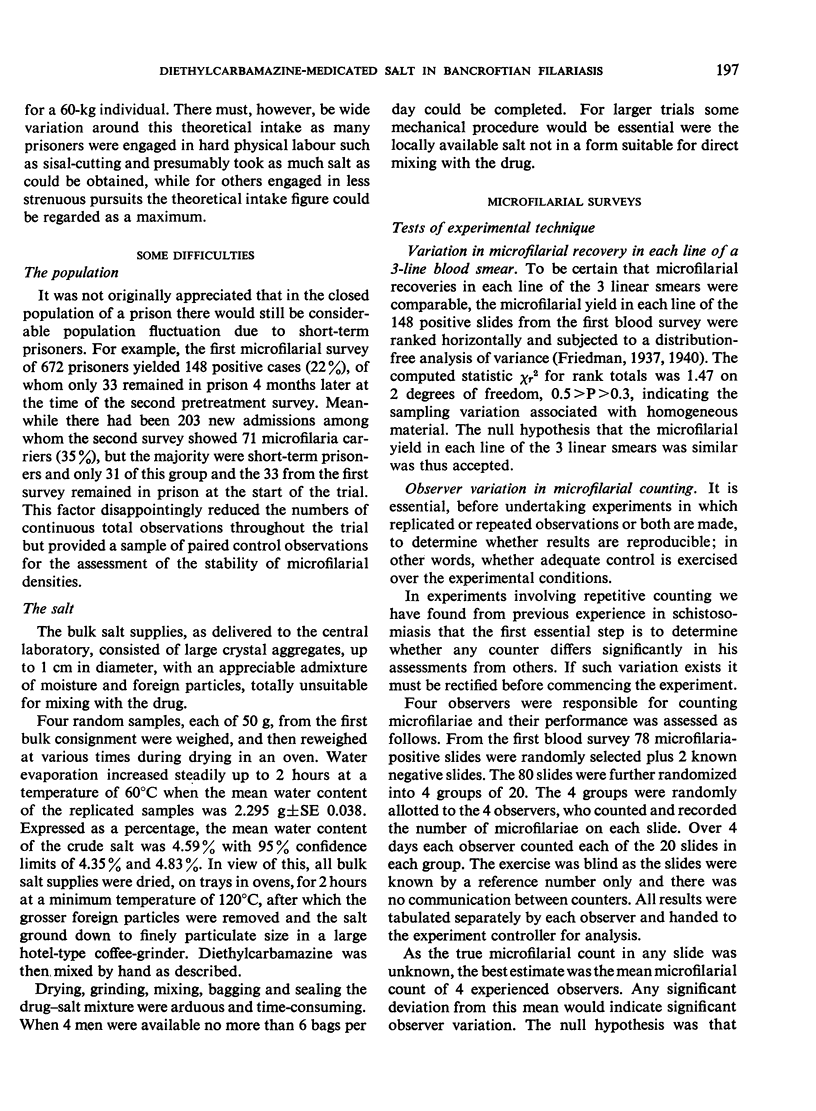
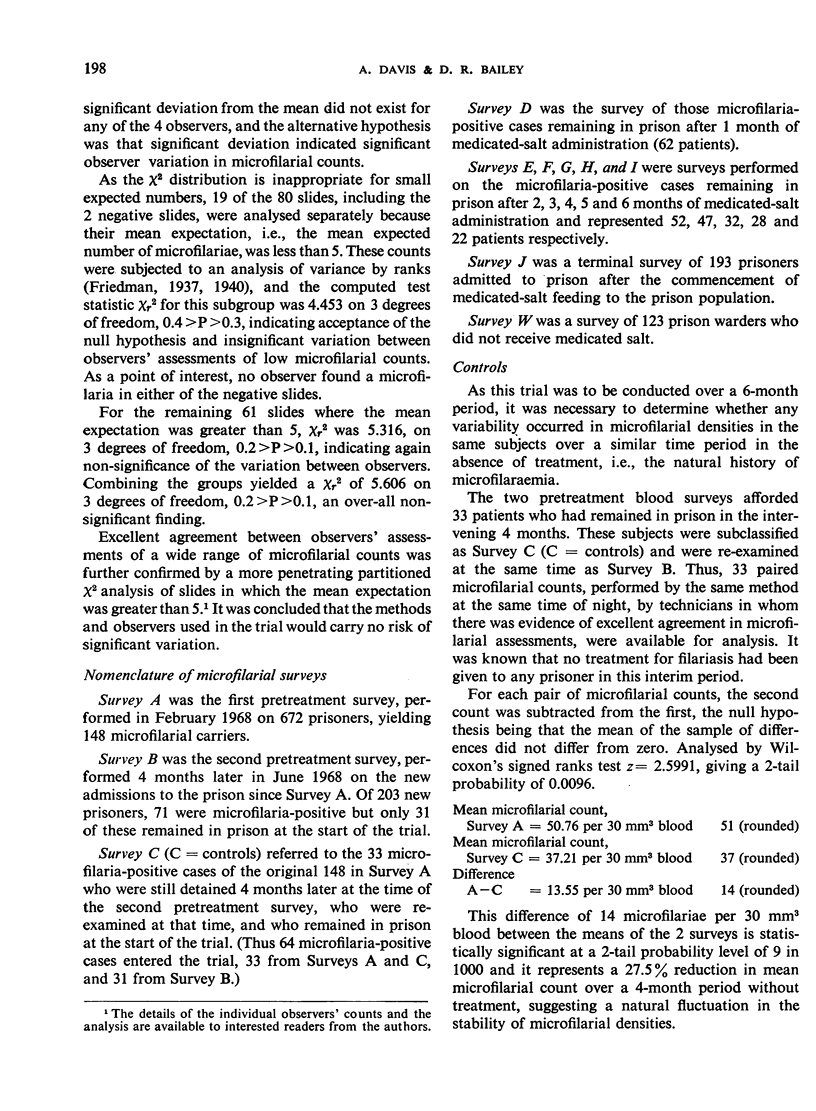
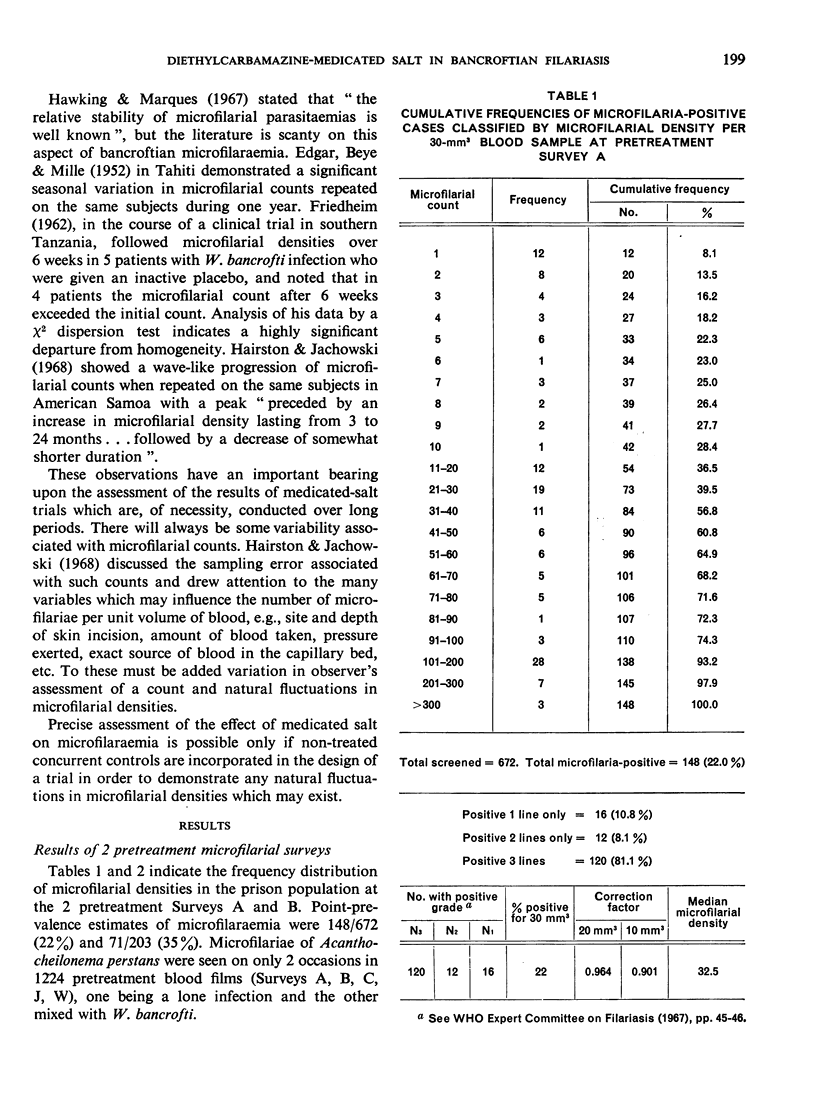
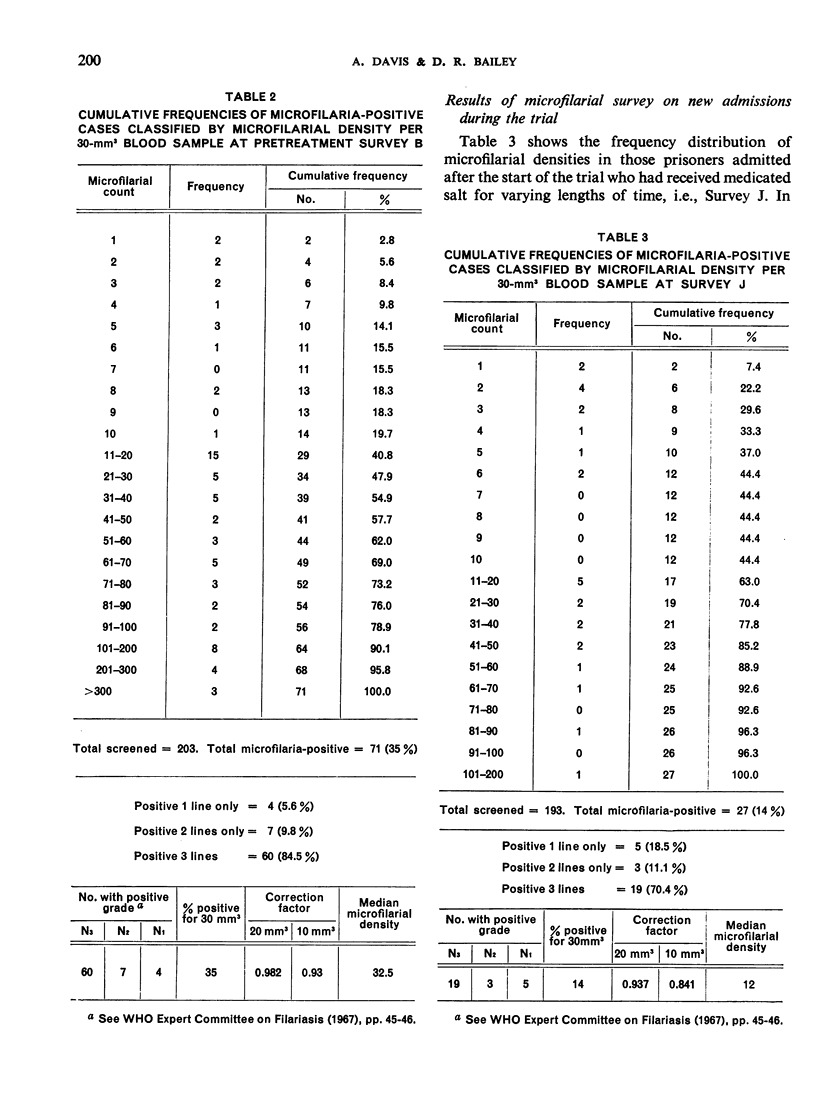
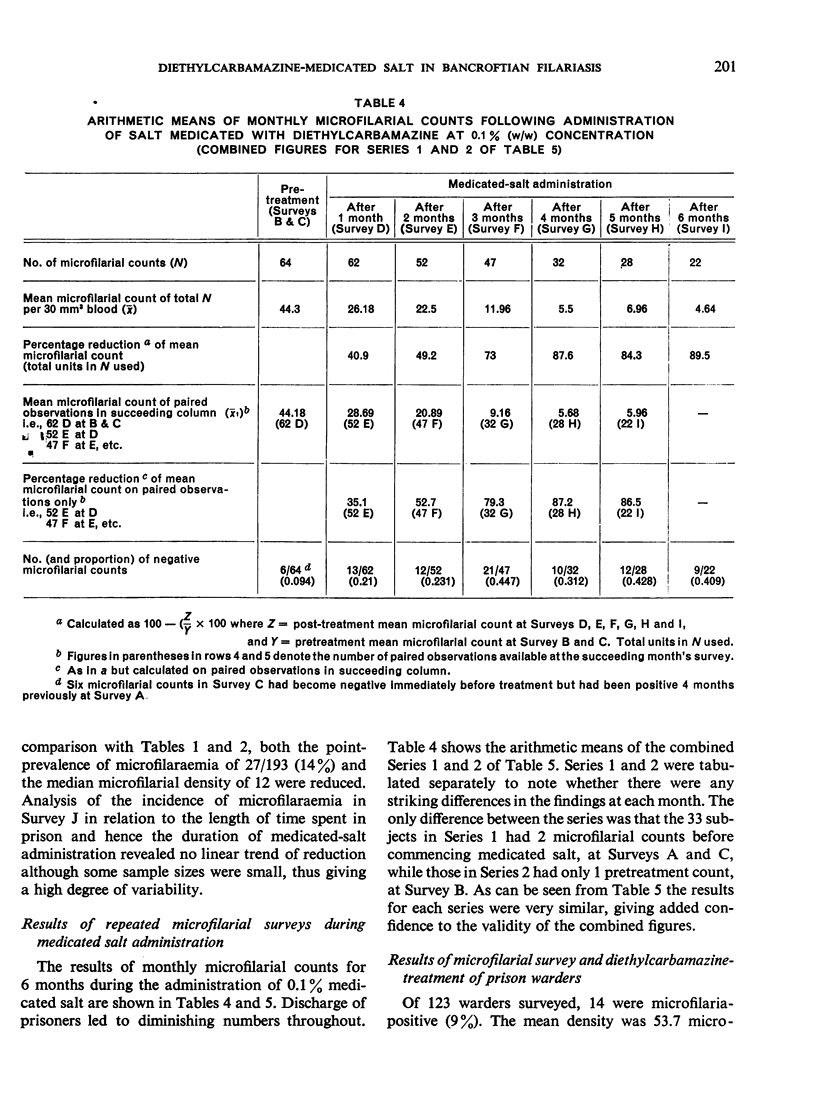
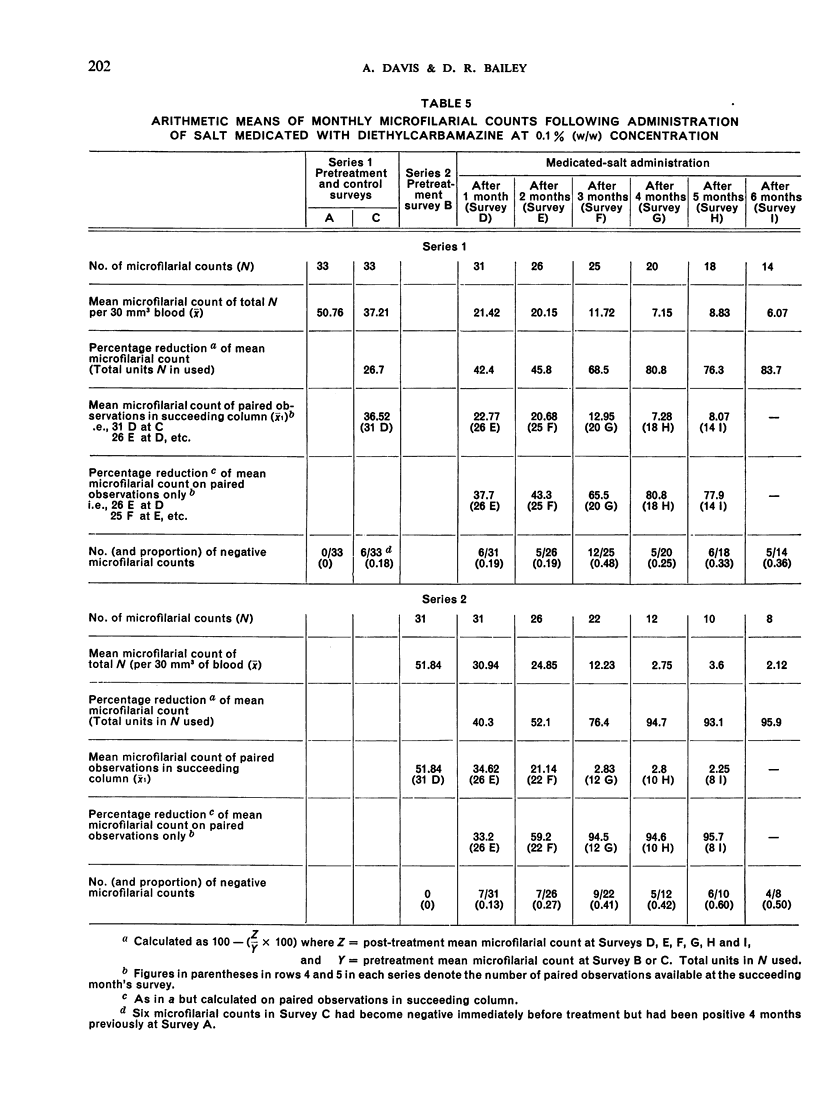
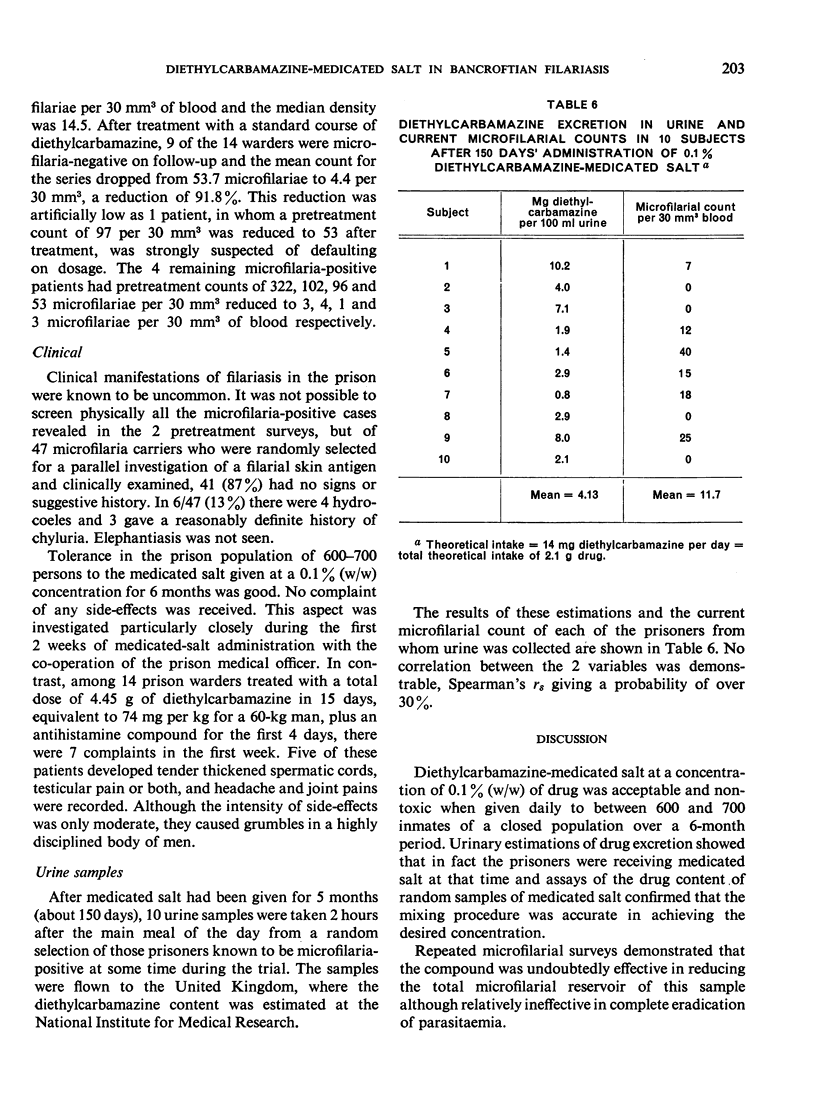
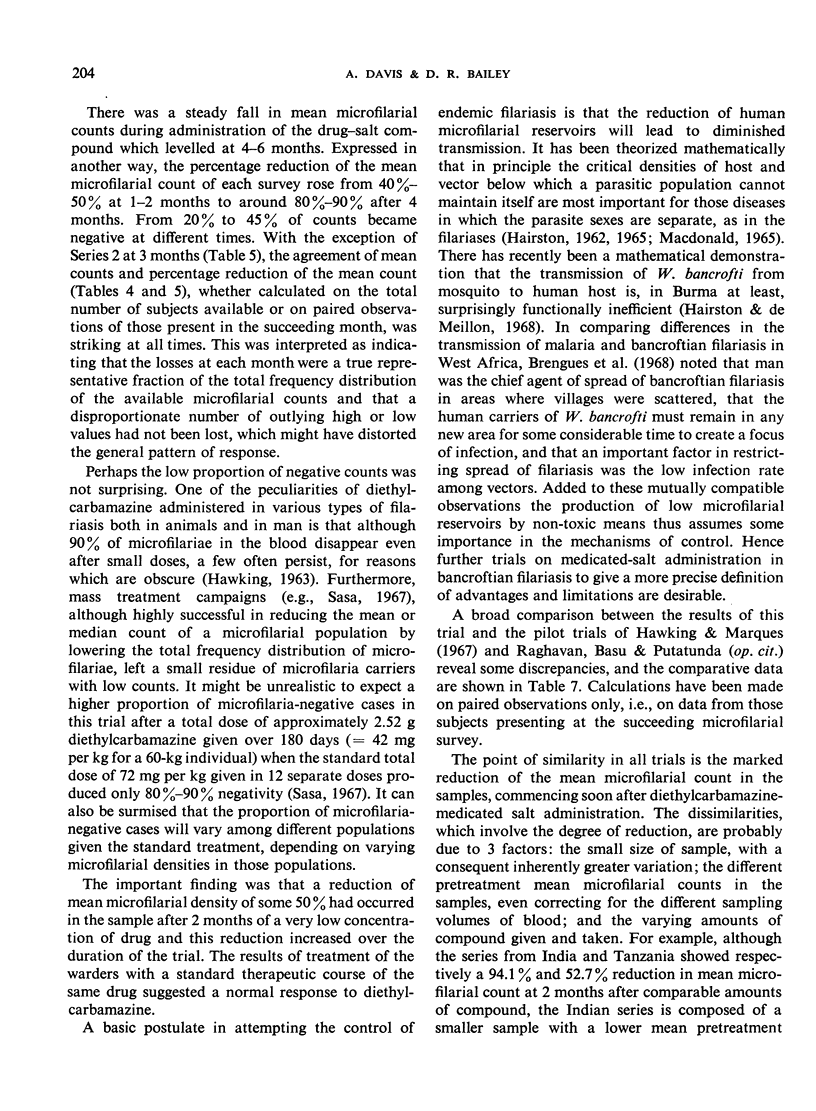
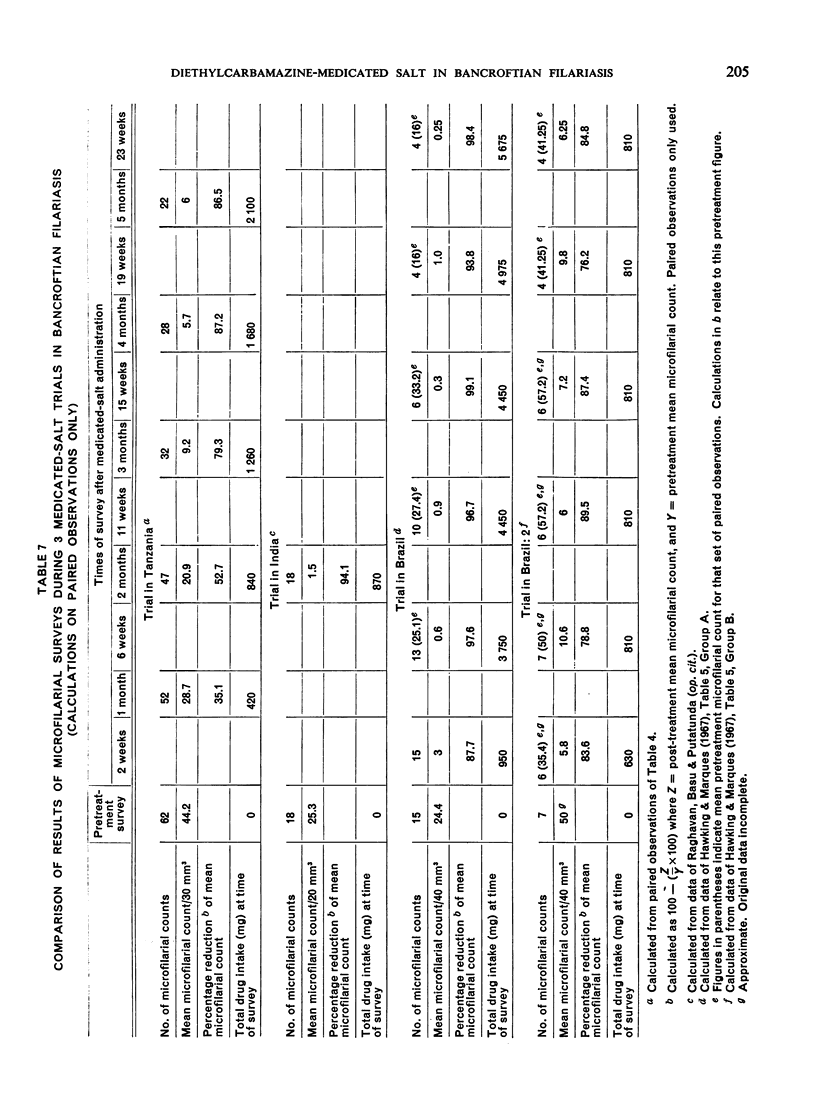
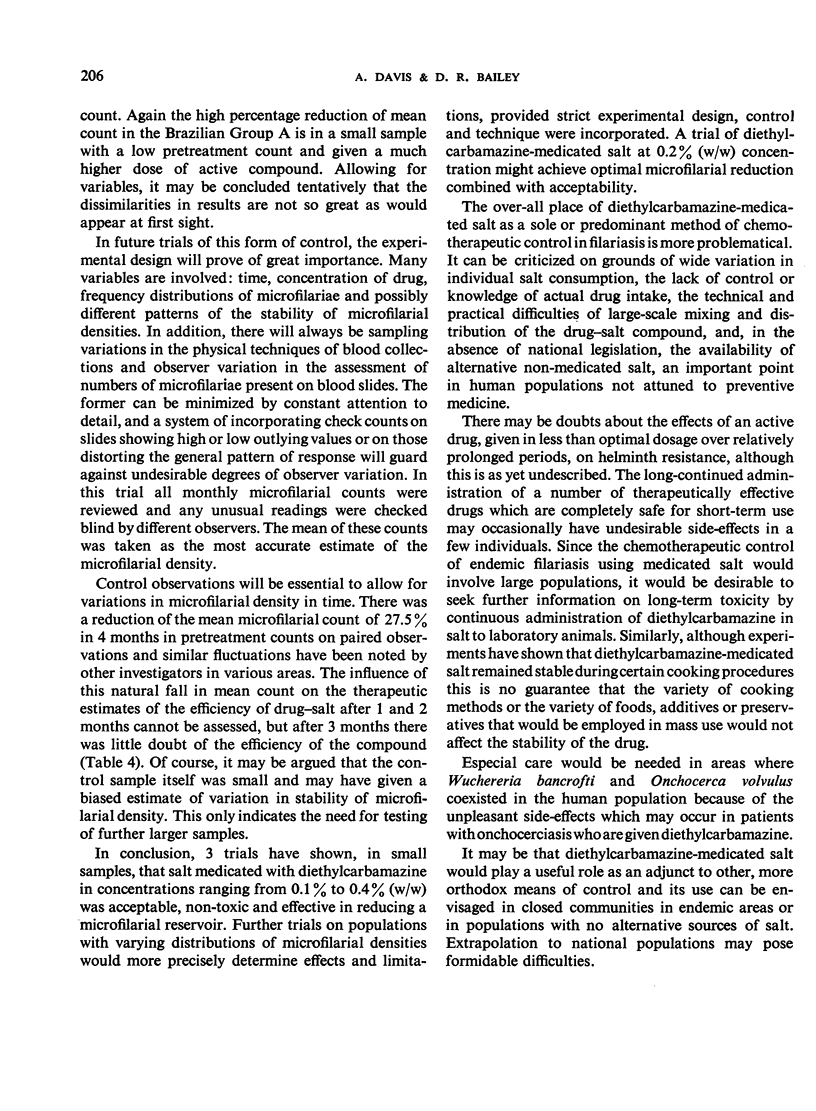
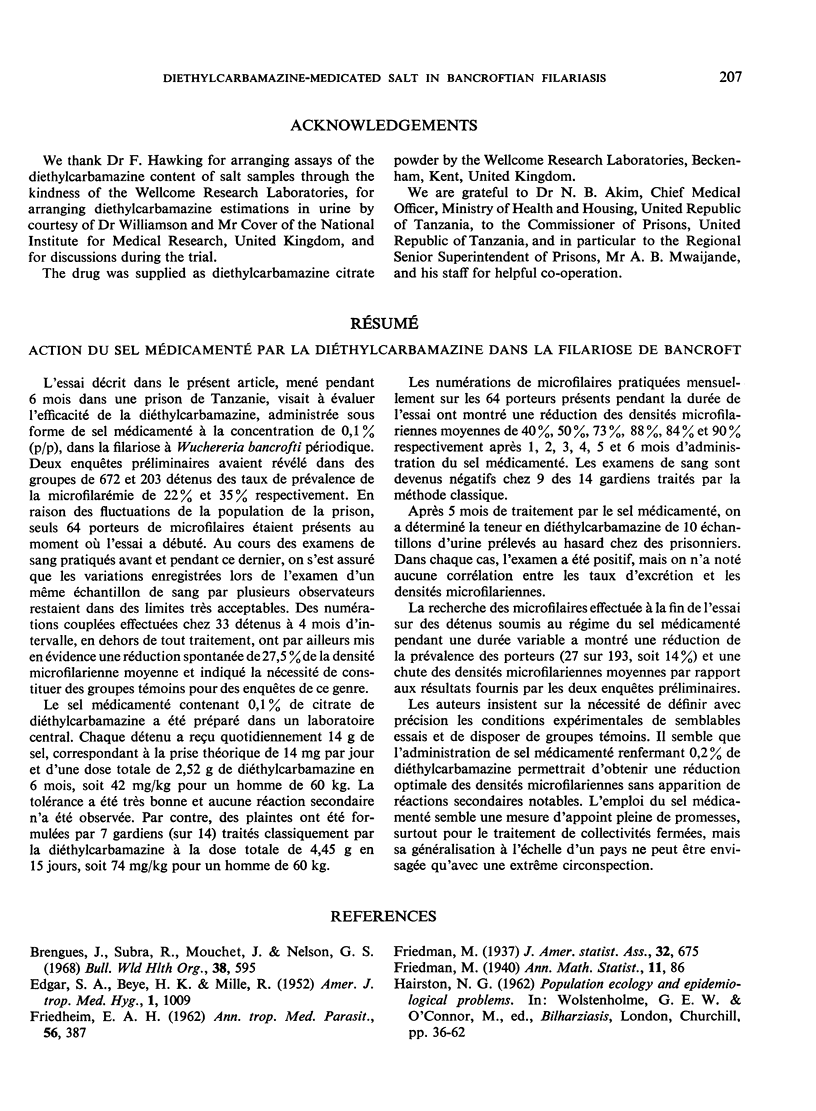
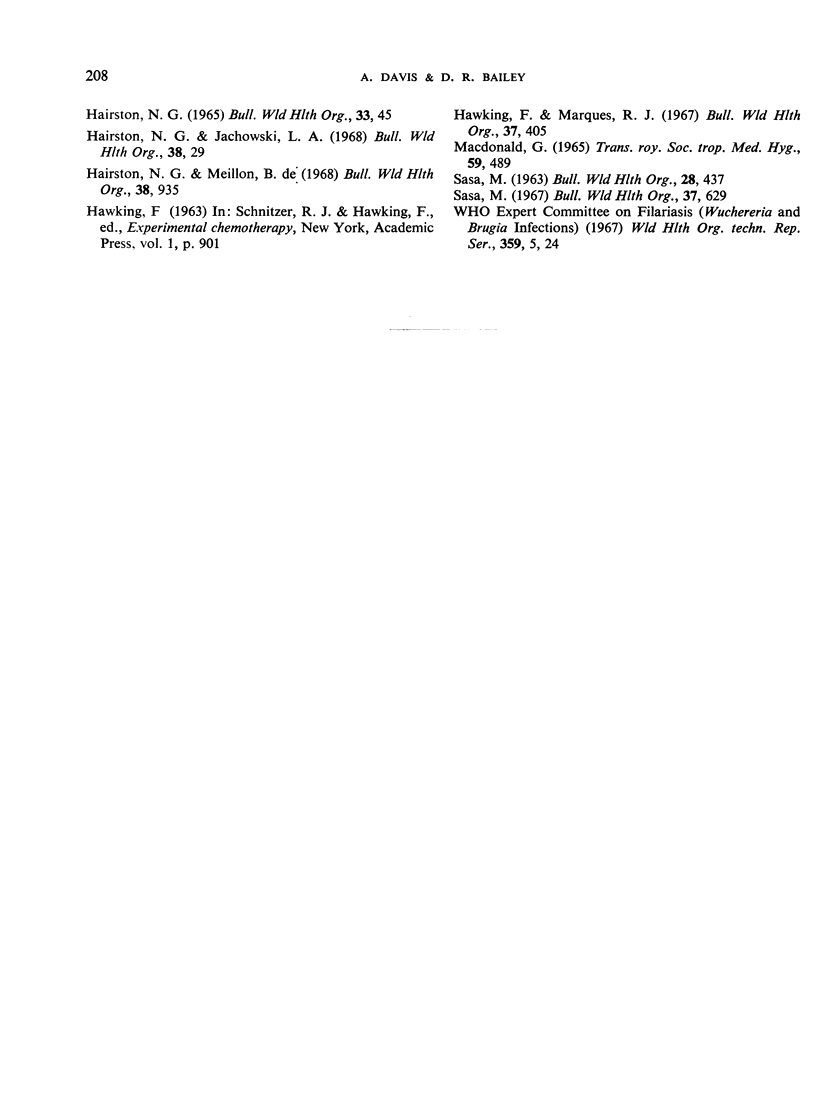
Selected References
These references are in PubMed. This may not be the complete list of references from this article.
- Brengues J., Subra R., Mouchet J., Nelson G. S. La transmission de Wuchereria bancrofti Cobbold en Afrique occidentale. Etude préliminaire d'un foyer de savane nord-guinéenne. Bull World Health Organ. 1968;38(4):595–608. [PMC free article] [PubMed] [Google Scholar]
- EDGAR S. A., BEYE H. K., MILLE R. A preliminary report on a periodic tendency of microfilariae of Wuchereria bancrofti observed in Tahita, French Oceania. Am J Trop Med Hyg. 1952 Nov;1(6):1009–1019. doi: 10.4269/ajtmh.1952.1.1009. [DOI] [PubMed] [Google Scholar]
- FRIEDHEIM E. A. MSbB in the treatment of filariasis due to Wuchereria bancrofti. Ann Trop Med Parasitol. 1962 Dec;56:387–395. doi: 10.1080/00034983.1962.11686137. [DOI] [PubMed] [Google Scholar]
- Hairston N. G., de Meillon B. On the inefficiency of transmission of Wuchereria bancrofti from mosquito to human host. Bull World Health Organ. 1968;38(6):935–941. [PMC free article] [PubMed] [Google Scholar]
- Hariston N. G., Jachowski L. A. Analysis of the Wuchereria bancrofti population in the people of American Samoa. Bull World Health Organ. 1968;38(1):29–59. [PMC free article] [PubMed] [Google Scholar]
- Hawking F., Marques R. J. Control of Bancroftian filariasis by cooking salt medicated with diethylcarbamazine. Bull World Health Organ. 1967;37(3):405–414. [PMC free article] [PubMed] [Google Scholar]
- Macdonald G. The dynamics of helminth infections, with special reference to schistosomes. Trans R Soc Trop Med Hyg. 1965 Sep;59(5):489–506. doi: 10.1016/0035-9203(65)90152-5. [DOI] [PubMed] [Google Scholar]
- SASA M. Pilot experiments in the control of bancroftian filariasis in Japan and Ryukyu. Bull World Health Organ. 1963;28(4):437–454. [PMC free article] [PubMed] [Google Scholar]
- Sasa M. Microfilaria survey methods and analysis of survey data in filariasis control programmes. Bull World Health Organ. 1967;37(4):629–650. [PMC free article] [PubMed] [Google Scholar]


